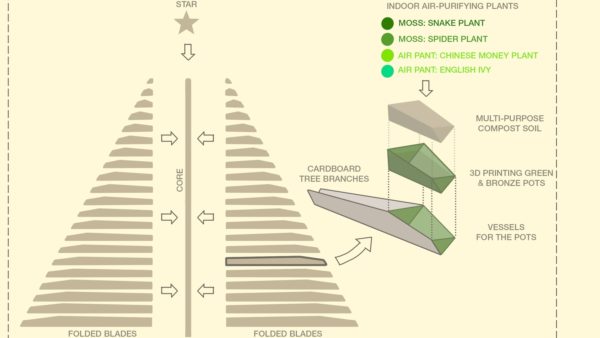Staff at international architecture practice WW+P have used the design and construction of their London office Christmas tree to demonstrate the value of computational design and the kit-of-parts approach.
WW+P’s digital team assembled a multidisciplinary in-house team, including design and model-making, to work on the Christmas tree project voluntarily.
Giulia Pustorino, senior associate and head of digital at WW+P, explained that work on the design started in September, with the project team meeting once a week during lunchtime to progress and agree on actions. “The early career architect of the team worked to develop the script and make the design intent a reality. This has been a collaborative process and extremely valuable to learn and engage with computational design,” she told BIMplus.
The tree branches are made from cardboard, while the plant plots at the end of each branch were 3D-printed in-house. Pustorino added: “It took a couple of weeks to 3D-print all the parts, and one day for the cardboard to be laser-cut. All elements were built in-house with the contribution of the model makers of the office. Once everything was ready, we invited the entire office to help assemble the tree.”
The tree incorporates biophilic design, so indoor air-purifying plants were selected for placement in the tree branches.
Reconfigurable design
With an eye on sustainability and festive traditions, the tree has been designed to be deconstructed on the 12th day of Christmas and reconfigured for the rest of the year, before being converted back to the Christmas tree format in November 2025.
“There’s no better way to learn than by doing, and the Christmas tree project has given us unique opportunities to dive deep into our computational skills,” said Pustorino. “Computational design enhances our design processes, helps to achieve greater efficiency and fosters innovation. This approach enables us to tackle complex design challenges with confidence and creativity, ultimately delivering superior results that resonate with both clients and the broader community.”
BIMplus is happy to report that the tree project was delivered on time and to budget.
Don’t miss out on BIM and digital construction news: sign up to receive the BIMplus newsletter.
The post Building the perfect Christmas tree with computational design appeared first on BIM+.


